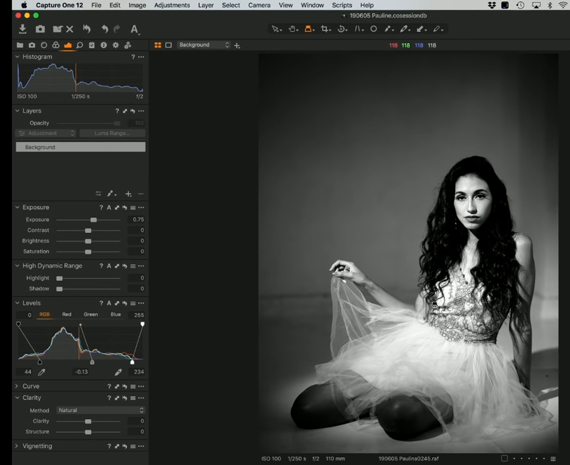If you look at old prints of photos, you may notice that they are not at all perfect. They appear overly contrasty, and lack sufficient details. Yet, the nostalgia they invoke is priceless. In fact, many photographers today work very hard to emulate the vintage large format look. With modern equipment and post-processing techniques, you can easily emulate such looks and even establish your own style. Photographer Daniel Norton from Adorama demonstrates how you can take gritty black and white portraits in a studio:
Equipment
Norton uses a Fuji GFX 50R with a 110mm f/2 lens to mimic the large format look. For lighting the model, he uses a Dedolight 400W HMI light which is a daylight balanced hot light. The light has a spherical lens on the front that casts an even light on the skin and casts a hard shadow, which is perfect for this purpose.
Taking Black and White Photos
Norton photographs the model with the lens at f/2 and the camera set at ISO 100 and 1/250s. To make his work easier, he shoots the image with the Acros black and white profile in the camera.
As you can see, the image has come out beautiful. The “problem” however is that the image is too clean.
“I want to kind of mess it up a little bit.”
Adding Contrast To The Black and White Photo
Vintage black and white photos usually have high contrast. So much that the details get lost. To mimic a similar effect, Norton plays around with the levels in Capture One. The trick is to increase the exposure a bit at first. Then, add contrast by pulling the shadows, mid-tones, and the highlights. Once you add contrast using the levels, feel free to adjust the exposure using the exposure slider.
Adding Blur
“When you’re shooting with large format camera, you’re shooting at f/11 or f/16 to get a depth of field I’m getting with f/2 here.”
In the case of large format cameras, using a small aperture meant using a slower shutter speed. This thereby introduced some level of motion blur into the image. Therefore, to give the image an authentic vintage look, Norton intentionally shakes the camera a bit while taking the photo. This also adds a little softness to the image and gives it a more authentic, vintage look.
“If you wanted to add grain, you could do that too.”
What trick do you use to get a gritty image?
Like This Article?
Don't Miss The Next One!
Join over 100,000 photographers of all experience levels who receive our free photography tips and articles to stay current:







Why not just shoot film? It is the process of shooting film that will change the way you see things and thus the images you produce.